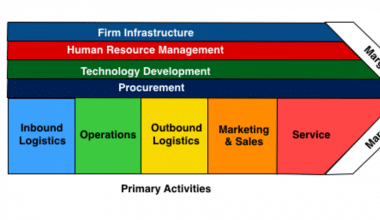Collaboration in the workplace is essential for the success of any team, and it entails individuals working together to achieve a common objective by utilizing their skills and knowledge. it is important because it allows a broad collection of ideas to come together and be developed into the finest possible output. Collaboration may be seen in every element of business, from marketing campaigns to product development. Fortunately, collaborating has never been easier thanks to collaboration software development. This article will explore some examples and the concept of collaboration and its importance in the workplace.
What is Collaboration
Collaboration is the process of working together with others to develop or generate something. Individuals or groups can contribute their distinct abilities, perspectives, and ideas to a project or effort in order to achieve a common goal. Brainstorming sessions, team meetings, collaborative authorship or editing of papers, feedback sharing, and participation in group activities are all examples of collaboration. It can also happen in a variety of settings, including face-to-face, online, or a combination of the two.
Collaboration is generally lauded in creative industries such as painting, music, and cinematography, where several people may come together to create a single piece of work. It is especially beneficial in academic settings where scholars may cooperate on projects or publications, as well as in business settings where teams may collaborate to generate goods, services, or marketing strategies.
What Is Collaboration in the Workplace
Collaboration in the workplace is the practice of working with others to reach a common purpose or goal. Individuals or teams from several departments or areas of expertise collaborate to share ideas, information, and resources in order to complete a certain task or project. Open communication, trust, and respect among team members are required for effective collaboration. It necessitates a desire to share knowledge and skills, as well as a dedication to working toward a common goal.
Collaboration in the workplace can result in a variety of advantages, such as enhanced productivity, better decision-making, and more innovation. As team members work together toward a common objective, it can also promote a sense of community and positive work culture.
Collaboration Examples
There are several examples of collaboration in various fields, such as:
#1. Science
Scientists frequently work together on research projects, exchanging data, ideas, and skills in order to enhance knowledge in their profession.
#2. Music
Musicians write and play music together, often bringing different skills and genres to create something new and distinctive.
#3. Companies
Companies work together on initiatives and collaborations to share resources, grow markets, and boost profits.
#4. Education
To improve teaching and learning results, teachers and educators collaborate on lesson design, curriculum development, and professional development.
#5: Healthcare
Healthcare professionals work together to deliver the best possible treatment and outcomes for patients by exchanging information and knowledge.
#6. Art
Artists work together on projects to create works that are more than the sum of their individual contributions.
#7. Technology
Technology businesses often work together to incorporate different technologies and capabilities while developing new goods and services.
#8. Nonprofits
Nonprofit groups regularly work together to address difficult social and environmental challenges, as well as with government agencies and companies, to achieve their purposes.
These are just a few examples of collaboration, but it is essential across a wide range of areas and sectors.
What Is Collaboration Software?
Collaboration software, commonly referred to as “groupware,” is a form of software that enables individuals or groups to collaborate on a similar project or activity regardless of their physical location. However, it provides a digital platform for real-time communication, file sharing, task management, and partnership.
Collaboration software can be used for a range of things, including:
#1. Project Management
Collaborative software assists teams in project management, tracking progress, assigning tasks, and setting deadlines.
#2. Communication
Collaborative software allows team members to communicate with one another in real-time using texting, video conferencing, and other technologies.
#3. File Sharing
Team members can also use collaborative software to share files and documents, work on them together, and provide comments.
#4. Knowledge Administration
Collaborative software aids in the capture and sharing of knowledge within a team or organization, making information more accessible and avoiding duplication of effort.
#5 Managing Customer Relationships
Customer interactions, sales leads, and customer support may all be managed with collaborative software. However, collaboration software examples include Slack, Microsoft Teams, Asana, Trello, Google Drive, and Dropbox. Collaboration software has grown in importance in recent years as more teams and organizations work remotely or across many locations. It has the potential to boost productivity and efficiency and create greater communication and cooperation among team members.
What Are the Three 3 Important Aspects of Collaboration?
The importance of collaboration requires effective teamwork, communication, trust, and common goals.
#1. Communication
The key to successful teamwork is effective communication. It also entails actively listening, exchanging information, ideas, and feedback, and ensuring that everyone is on the same page. Written communication, verbal communication, video conferencing, and chat are all modes of communication.
#2. Trust
Cooperation cannot function without trust. Team members must have faith in one another to keep their promises, meet deadlines, and communicate honestly and freely. however, trust is earned over time by consistently demonstrating dependability, transparency, and accountability.
#3. Common Objectives
Cooperation necessitates a shared sense of purpose as well as a clear knowledge of mutual objectives. Additionally, setting clear objectives, defining roles and duties, and aligning everyone’s efforts toward the desired outcome are all part of this process. Shared goals can also help everyone stay focused, motivated, and committed to the collaborative effort.
What Are the 7 Main Components of Collaboration?
The seven main components of collaboration are:
#1. Common Goals
Cooperation requires a shared sense of purpose and a clear understanding of common goals. This also involves setting clear objectives, defining roles and responsibilities, and aligning everyone’s efforts toward achieving the desired outcome.
Cooperation involves sharing knowledge and expertise to achieve common goals. This also involves sharing information, ideas, and feedback to create a shared understanding of the problem and identify possible solutions.
#3. Communication
Effective communication is essential for successful cooperation. It also involves actively listening, sharing information, ideas, and feedback, and keeping everyone on the same page.
#4. Trust
Trust is essential for cooperation to work. Team members must trust one another to deliver on their commitments, meet deadlines, and communicate honestly and openly. Trust is also built over time through consistent actions and behaviors that demonstrate reliability, transparency, and accountability.
#5. Flexibility
Cooperation requires flexibility and adaptability. It also involves being open to new ideas, approaches, and perspectives, and being willing to adjust plans and strategies as needed.
#6. Conflict Resolution
Conflict is a natural part of the cooperation, and it’s essential to have effective conflict resolution strategies in place. This also involves addressing disagreements in a constructive and respectful manner and finding ways to move forward together.
Collaboration also involves sharing accountability for the results. However, team members must be willing to take ownership of their actions and decisions and hold themselves and others accountable for the outcomes.
What Are the 5 Elements of Collaboration?
The five elements of collaboration are:
Collaboration begins with a shared vision or purpose. However, all team members need to have a clear understanding of the goals, objectives, and outcomes of the cooperation effort. This shared vision also helps to align efforts and establish a common ground for cooperation.
#2. Trust
Trust is a crucial element of successful cooperation. However, team members need to have trust in each other’s capabilities, expertise, and commitment. Trust is also built over time through transparent communication, shared accountability, and mutual respect.
#3. Communication
Effective communication is essential for collaboration. However, team members need to be able to share ideas, ask questions, provide feedback, and clarify expectations. Communication can also take many forms, including face-to-face meetings, video conferences, emails, or project management tools.
Collaboration also involves sharing responsibility for achieving the desired outcomes. However, all team members need to contribute their expertise, knowledge, and effort to ensure the success of the cooperation effort. Each team member needs to take ownership of their role and also be accountable for their contributions.
#5. Diversity
Collaboration benefits from diversity. However, team members bring different backgrounds, perspectives, and skills to the collaborative effort. Diversity can help to generate new ideas, foster creativity, and overcome challenges that may not have been addressed otherwise.
What Are the Benefits of Collaboration?
Collaboration can also provide numerous benefits to individuals, teams, and organizations. Some of the key benefits of cooperation include:
#1. Increased Productivity
Collaboration can also help distribute workloads and leverage individual strengths, leading to increased efficiency and productivity.
#2. Improved Problem-Solving
Collaboration brings together diverse perspectives and knowledge, leading to more creative and effective problem-solving.
#3. Enhanced Creativity and Innovation
Collaboration fosters an environment of open communication and idea-sharing, encouraging creativity and innovation.
#4. Improved Communication
Collaboration requires clear and effective communication, which can also improve communication skills and reduce misunderstandings.
#5. Better Decision-Making
Collaboration allows for more informed decision-making by considering diverse viewpoints and ideas.
#6. Increased Motivation and Engagement
Collaboration can also improve team morale and job satisfaction by providing opportunities for teamwork, social support, and shared achievement.
#7. Enhanced Learning and Professional Development
Collaboration also allows individuals to learn from each other and develop new skills through shared knowledge and experience.
#8. Reduced Costs and Risks
Collaboration can also help reduce costs and risks by pooling resources and expertise.
#9. Increased Competitiveness
Collaboration can also lead to the development of new products, services, and processes, making organizations more competitive.
What Are the Two Types of Collaboration?
The two types of collaboration are:
#1. Synchronous Collaboration
Synchronous cooperation happens in real-time and involves people working together simultaneously. Examples of synchronous collaboration include video conferences, phone calls, and instant messaging.
#2. Asynchronous Collaboration
Asynchronous collaboration also involves people working on a project or task at different times. Examples of asynchronous cooperation include email, project management tools, and shared documents.
What Are Five Strategies for Effective Collaboration?
There are several strategies that can also help promote effective collaboration. Here are five examples:
#1. Establish Clear Goals and Roles
Effective cooperation requires a clear understanding of goals and objectives. Each team member should have a defined role and responsibilities, and there should also be a shared understanding of what success looks like.
#2. Foster Open Communication
Communication is crucial for effective collaboration. Team members should be encouraged to share ideas, ask questions, and also provide feedback. Establishing regular check-ins and feedback loops can also help ensure that everyone is on the same page.
#3. Build Trust and Respect
Trust and respect are essential for effective collaboration. Team members should also be encouraged to listen to each other and value different perspectives. Encouraging an environment of mutual support can also help build trust and respect among team members.
#4. Utilize Technology and Tools
Technology and collaboration tools can also help facilitate communication and streamline workflows. Project management software, video conferencing, and document-sharing tools can also help to keep everyone organized and informed.
#5. Encourage Flexibility and Adaptability
Collaboration requires flexibility and adaptability, as tasks and goals may shift throughout the project. Team members should also be open to change and willing to adjust their approach as needed to achieve the desired outcomes.
What are the 4 types of collaboration?
There are numerous approaches to categorizing collaboration kinds, but one frequent approach is to define four major categories of cooperation:
#1. Internal Collaboration
Internal cooperation entails collaborating with individuals within the same organization or department. However, cross-functional teams, task forces, and committees are some examples.
#2. External Collaboration
External cooperation entails collaborating with individuals or groups outside of one’s own organization. However, partnerships, alliances, and joint ventures are some examples.
#3. Peer Collaboration
Peer cooperation entails working with colleagues who are also at a similar level within the same organization or profession.
#4. Crowdsourcing
Crowdsourcing is a method of cooperation that entails asking for ideas, feedback, or contributions from a wide and diverse group of people, typically via an online platform. Crowdsourced innovation challenges and social media campaigns are two examples.
FAQs
What is the best type of collaboration?
To select the proper sort of cooperation for your company, you must take a strategic approach and answer three basic yet crucial questions: So, where are we? What do we want to achieve? How do you get there?
How can you create a successful collaboration?
Ensure that everyone is on the same page. Don’t be scared to converse excessively, especially with a distant team.
What hinders collaboration?
Lack of trust: Team members may not feel comfortable providing comments or giving their thoughts during collaborative tasks if they lack trust.
Related Articles
- WORK MANAGEMENT TOOLS: its meaning, examples, and free best work management tools
- COLLABORATION SKILLS: Definition, Examples & How to Improve
- SMALL BUSINESS COMMUNICATION TOOLS: Best and Most Effective Tools to Use
- PROJECT MANAGEMENT TOOL: Top 10 Free Tools In 2023
- PERSONALITY ASSESSMENTS: Meaning, Methods, Test & Workplace
- EMPLOYEE INFORMATION FORM: Everything You Need to Know
- EVENT COORDINATOR: Definition, Job Description, Salary, Corporate & Difference
- SAMPLE SIZE: Definition, Calculation, Guide & Formula






